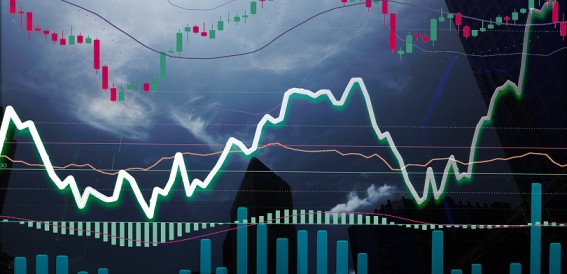Active trading in the stock market can offer substantial profit opportunities, but it comes with its risks. Whether you’re day trading, swing trading, or engaging in other forms of short-term trading, understanding and implementing effective risk management techniques is key to long-term success.
The Indian stock market, with its dynamic nature and occasional high volatility, requires traders to be well-prepared and disciplined. This article will discuss the top risk management techniques for active traders and explore how to manage risk in trading effectively, ensuring you can minimise potential losses and maximise gains.
What is Risk Management in Trading?
Risk management is the method and approach of limiting losses while maximising the potential for profit in the trading environment. With proactive trading, risk management means managing risk exposure through advanced planning and strategy.
Without an effective risk management method, traders risk losing substantial investment capital, especially in the rapidly moving and often unpredictable Indian market. Active traders must ultimately be active risk managers, demonstrate disciplined application of risk management methods to protect their investment capital and seek to increase investment profits.
Begin your investing journey today. Your Demat account is the first step.
Top Risk Management Techniques
These are fundamental strategies any Indian active trader should give a thought to safeguard capital and enhance long-term trading results:
-
Setting Stop-Loss Orders
Active traders in India should utilise stop-loss orders, which is one of the best strategies they can implement for risk management.
- A stop-loss order is a direction to sell a security automatically once it reaches a specific price level. This is one of the most basic yet effective methods to protect your capital from large losses.
- If you purchase a stock for ₹1,000 and have a stop-loss of ₹950, the stock will automatically be sold by the system if the stock reaches ₹950.
- This variety of stop-loss will limit your loss to ₹50 per share. Stop-loss orders help you manage risk by eliminating emotion and locking in loss before it worsens.
-
Position Sizing
Position sizing is important in trading risk management because it defines the capital you risk on a single trade. Position size affects risk. The larger the position, the greater the risk; the smaller the position, the less you will lose.
- Regardless of your trading strategy, position sizing is essential for trading risk management because it plays an important role in determining whether you have a positive or negative outcome over an extended period.
- An important rule of thumb in risk management is never to risk more than 1 -2% of your total trading capital on any trade. For example, if your trading capital is ₹5,00,000, you should risk no more than ₹5,000 to ₹10,000 per trade.
By diversifying position sizes across different assets and sectors and limiting the amount of position size, you can improve the overall risk on your portfolio. If one stock or sector underperforms, your portfolio will likely not be impacted.
-
Risk-Reward Ratio
Another important aspect of risk management in trading is the risk-reward ratio. It compares the potential amount of loss to the potential gain in a trade. A common rule of thumb is to achieve a risk-reward ratio of at least 1:3, indicating you want to risk ₹1 and, ultimately, make ₹3.
For example, if you are willing to risk ₹200 in a trade, based upon this risk-reward ratio, your profit target should be ₹600.
Traders may often fall into the trap of taking trades with a low risk-reward ratio of 1:1 or lower. It becomes difficult for traders to remain profitable or consistently profitable over time because the win rate may be much higher; however, the overall profit is not enough to offset the losses.
-
Diversification
Diversifying your portfolio is also a risk management strategy that active traders can use to lessen risk. Diversification means spreading investments across many stocks, which can be done by asset class, sector, or combination. Diversification in your portfolio will limit your potential for a significant loss in any position. In India, diversifying your investments across industries and sectors is prudent when sectors such as IT or banking can dominate the markets.
This can involve investing in:
- Large-cap stocks (e.g., Reliance Industries, HDFC Bank)
- Mid-cap stocks
- Small-cap stocks
- Commodities and ETFs
- Mutual funds
You can also diversify the types of trades you do. If you trade stocks primarily, look into other markets like forex, commodities, or even options for hedging the portfolio to minimise the overall risk of your portfolio. However, remember that too much diversification can also lead to lower returns. Find that balance where you can diversify while keeping your upside potential.
-
Hedging
Hedging is a method active traders employ to neutralise losses in one position by opposite-positioning another. You can look to options and/or futures to hedge your position.
For example, if you own a stock and are worried about short-term price drops, you can buy a put option for that stock. If the stock falls, the put option can help cover some of your losses, reducing your overall risk.
Hedging strategies can limit risk but require experience and knowledge of your instruments. In this case, it is worth starting small and learning while you gain experience if you are a beginner.
Conclusion
Risk management techniques for active traders are vital for navigating the volatile Indian market. You can protect your capital by implementing strategies such as setting stop-loss orders, managing position sizes, and maintaining a favourable risk-reward ratio. Staying informed about market conditions further increases your chances of long-term profitability.
Whether you’re a seasoned trader or just starting effective risk management, trading can distinguish between success and failure. If you’re ready to take your trading journey to the next level, consider partnering with Religare Broking. Get advanced trading platforms, risk management tools, and expert support to help you manage risk effectively and grow your portfolio.










